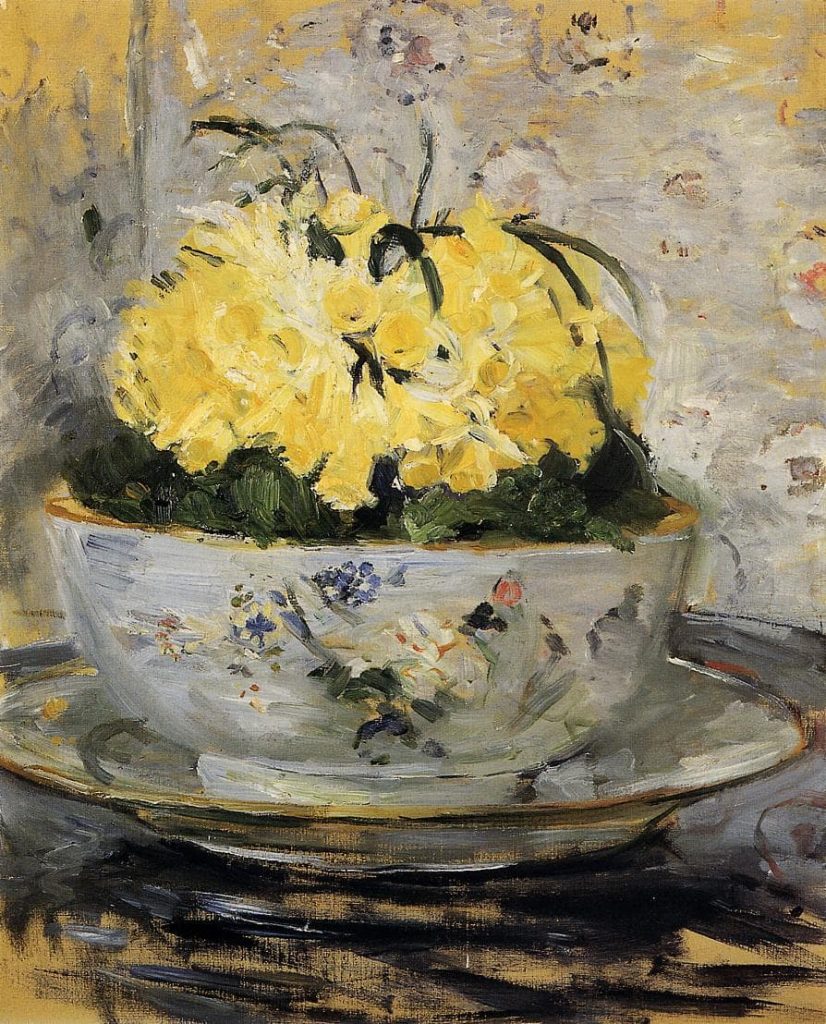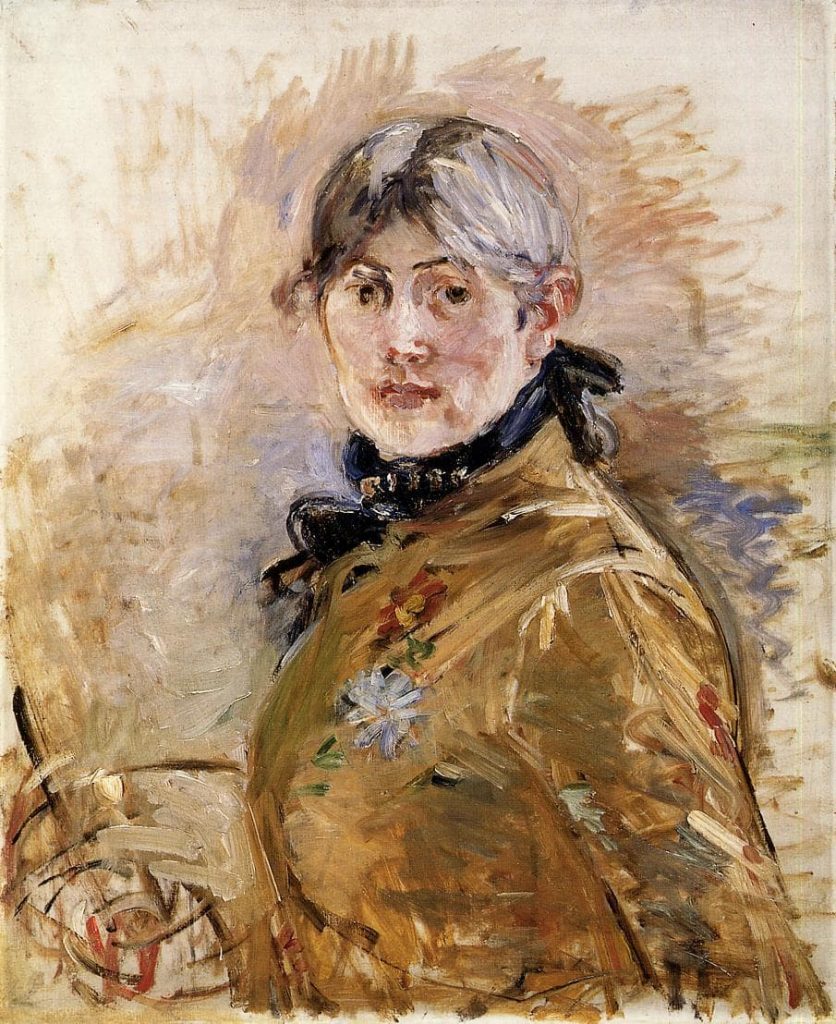

Berthe Marie Pauline Morisot was a 19th century painter and a member of the circle of painters in Paris who became known as the Impressionists.
Morisot painted what she experienced on a daily basis. Most of her paintings include domestic scenes of family, children, ladies, and flowers, depicting what women’s life was like in the late nineteenth century. Instead of portraying the public space and the society, Morisot preferred private, intimate scenes.
Like her fellow Impressionist Mary Cassatt, she focused on domestic life and portraits in which she could use family and personal friends as models, including her daughter Julie and sister Edma. The stenographic presentation of her daily life conveys a strong hope to stop the fleeting passage of time. By portraying flowers, she used metaphors to celebrate womanhood.
Prior to the 1860s, Morisot painted subjects in line with the Barbizon school before turning to scenes of contemporary femininity. Paintings like The Cradle (1872), in which she depicted current trends for nursery furniture, reflect her sensitivity to fashion and advertising, both of which would have been apparent to her female audience. Her works also include landscapes, garden settings, boating scenes, and theme of boredom or ennui.
Later in her career Morisot worked with more ambitious themes, such as nudes. In her late works, she often referred to the past to recall the memory of her earlier life and youth, and her departed companions.
Wikipedia contributors. (2020, July 29). Berthe Morisot. In Wikipedia, The Free Encyclopedia. Retrieved 20:55, October 13, 2020.